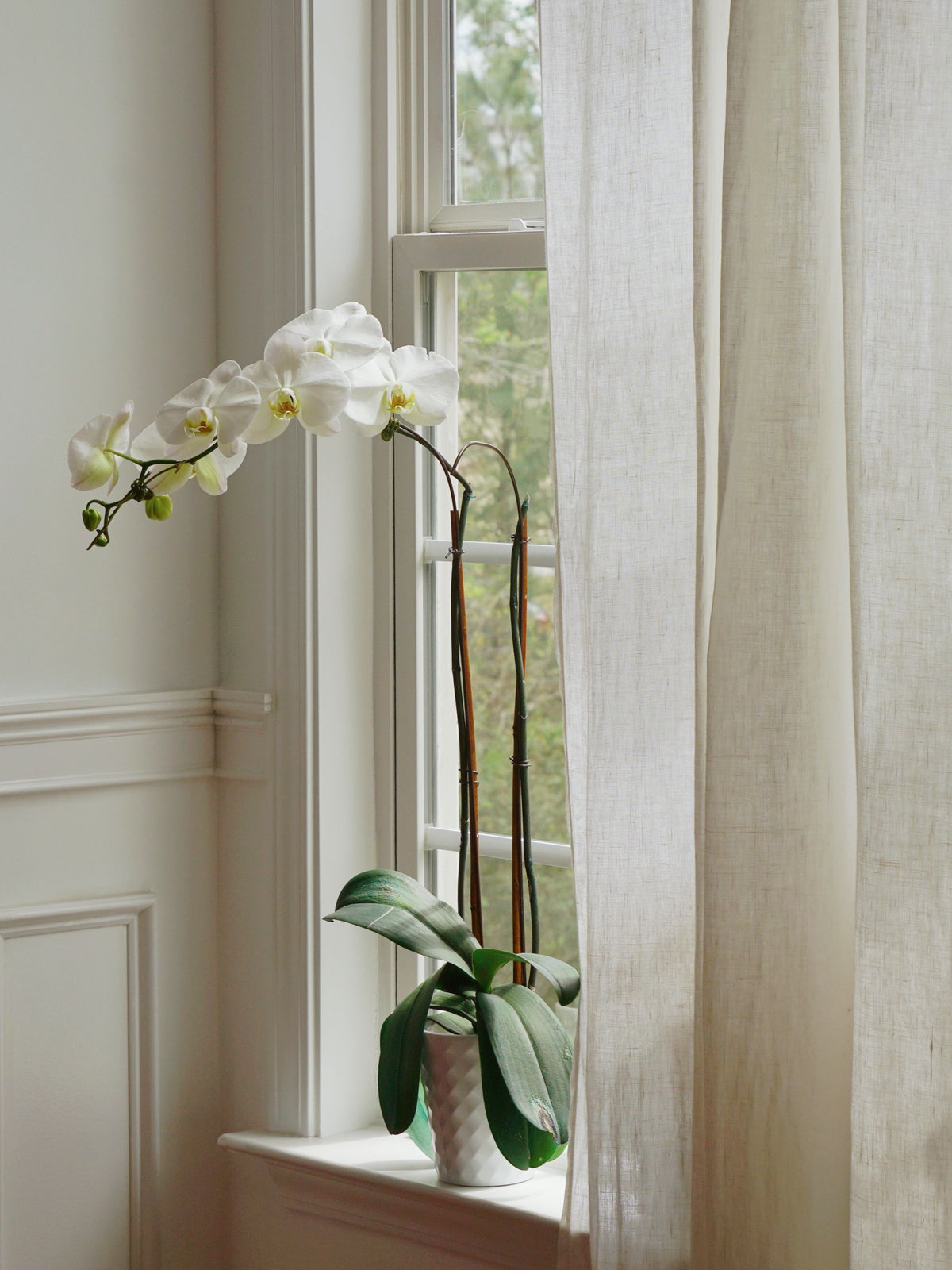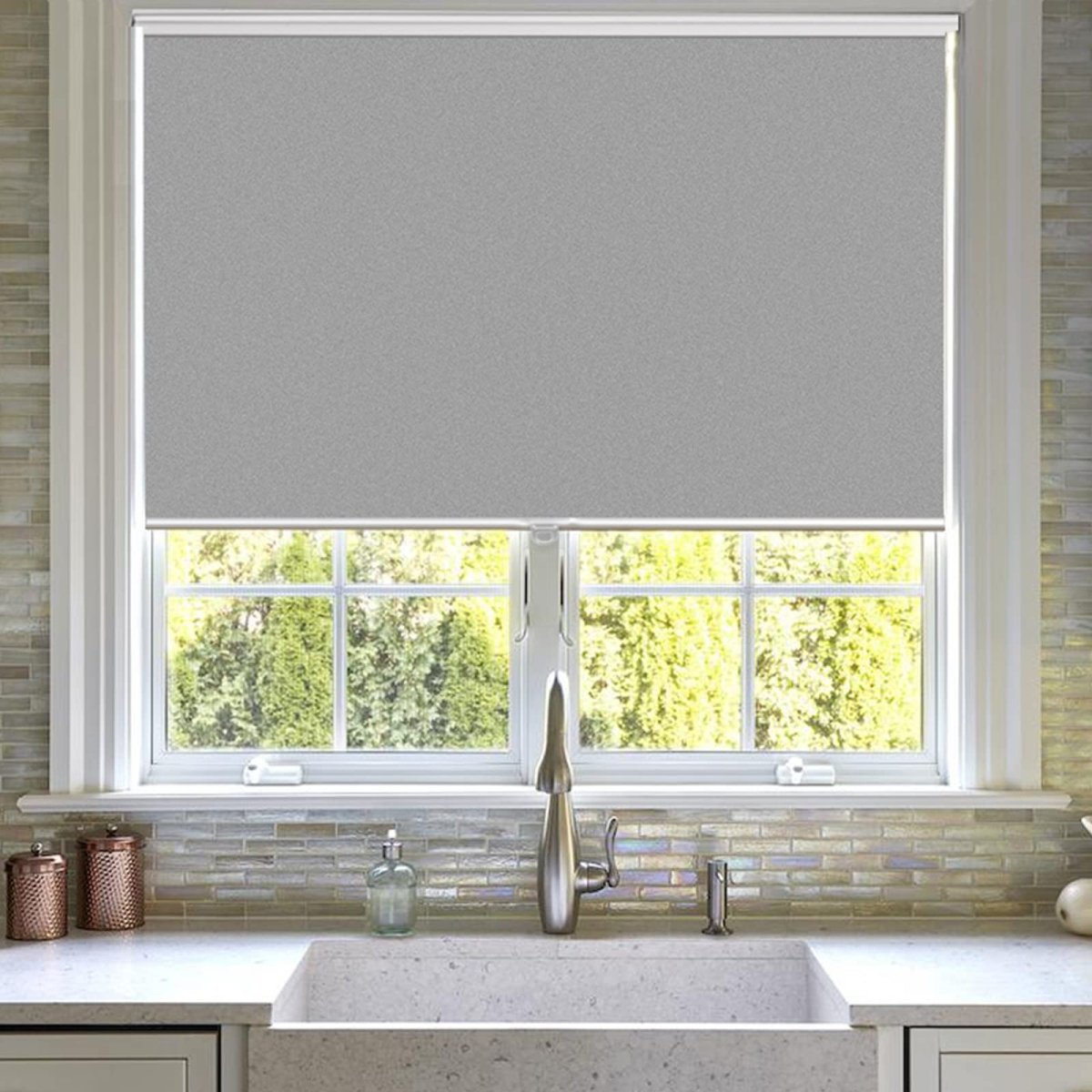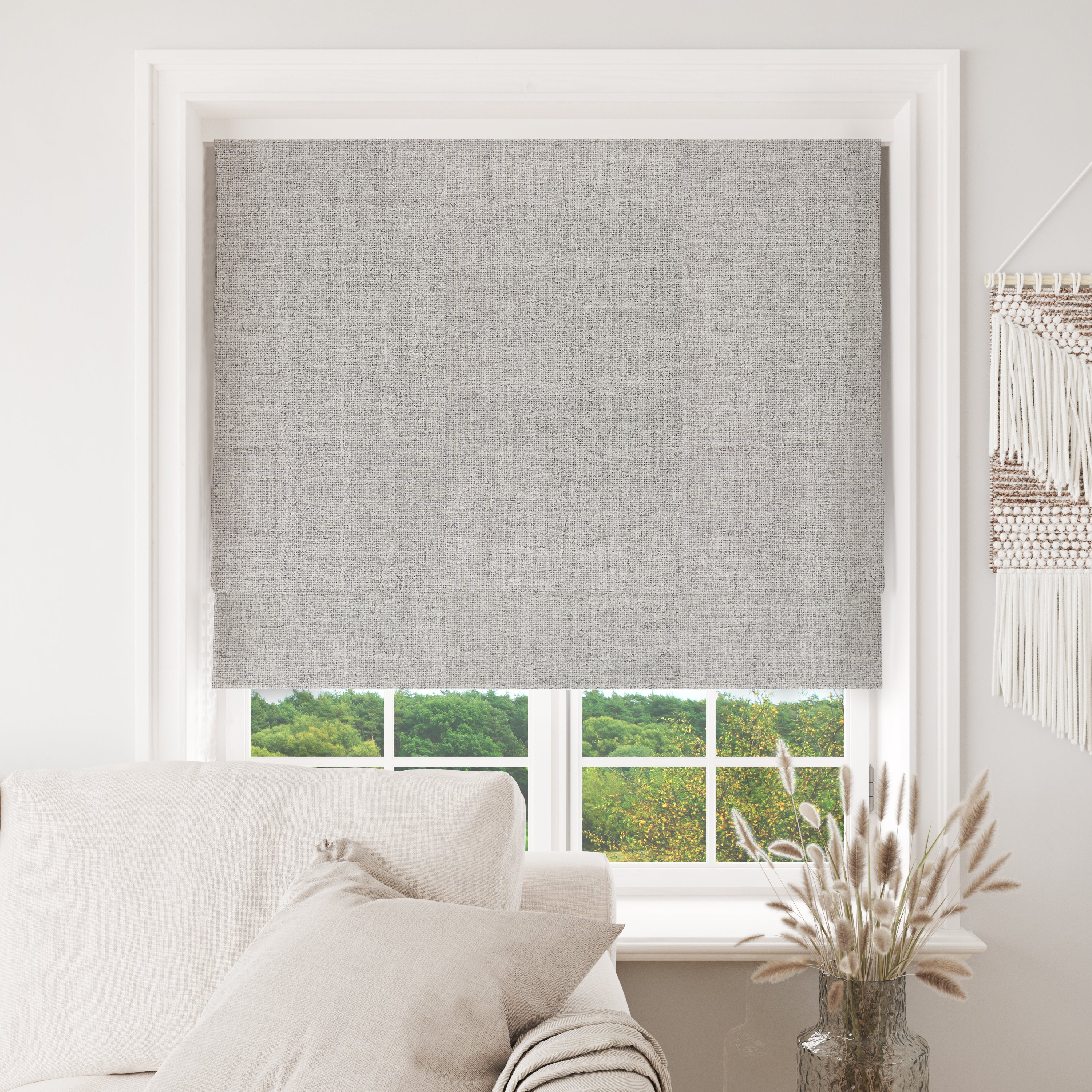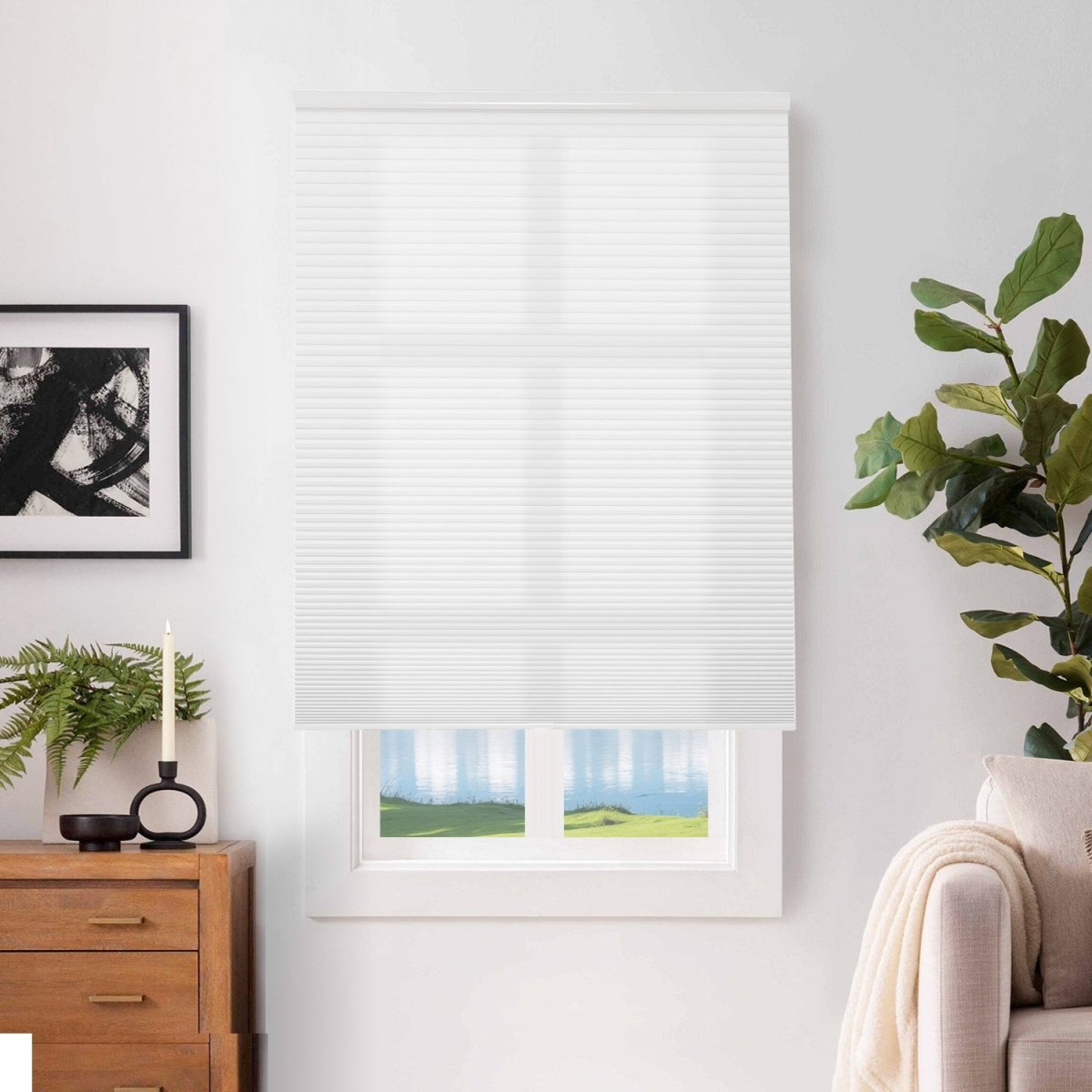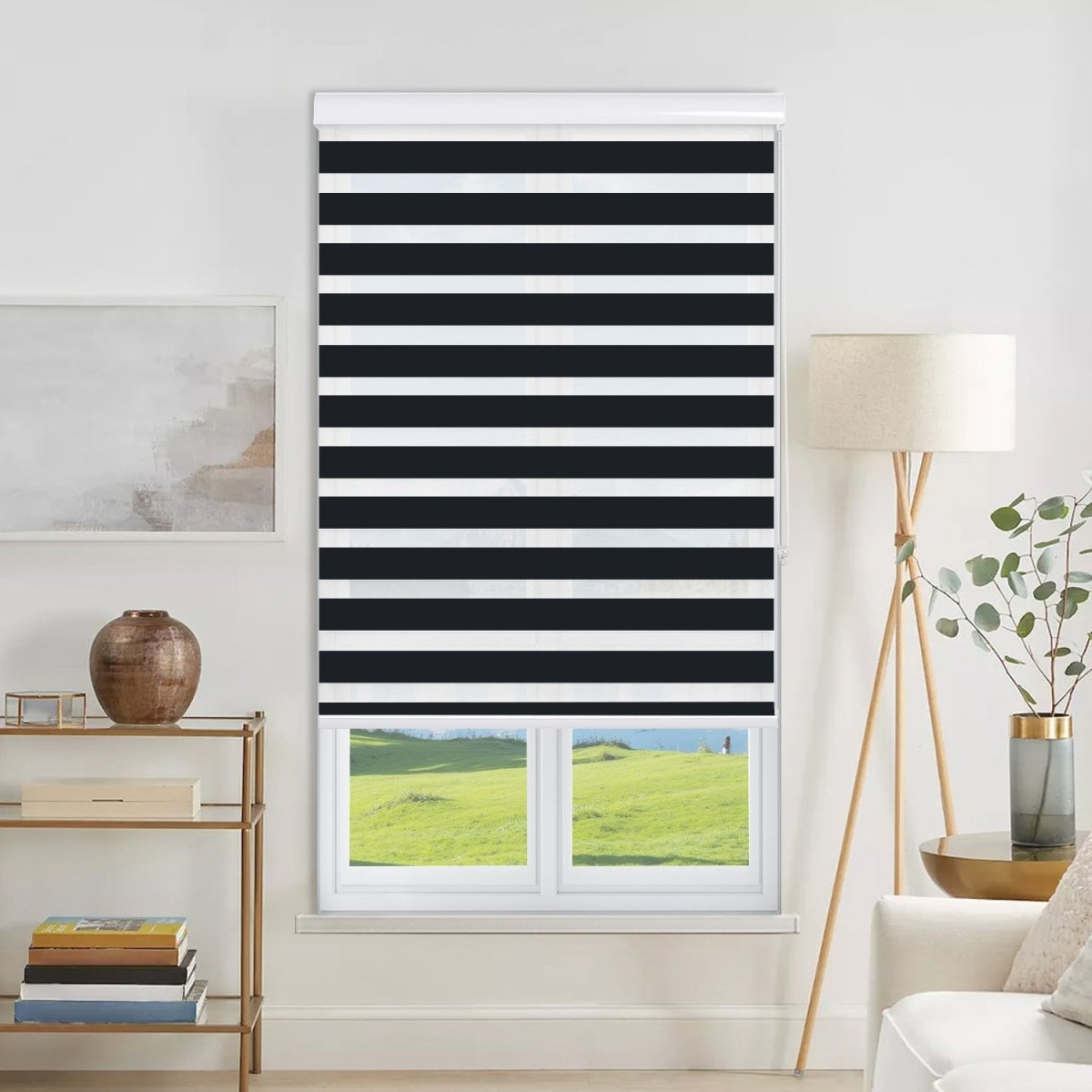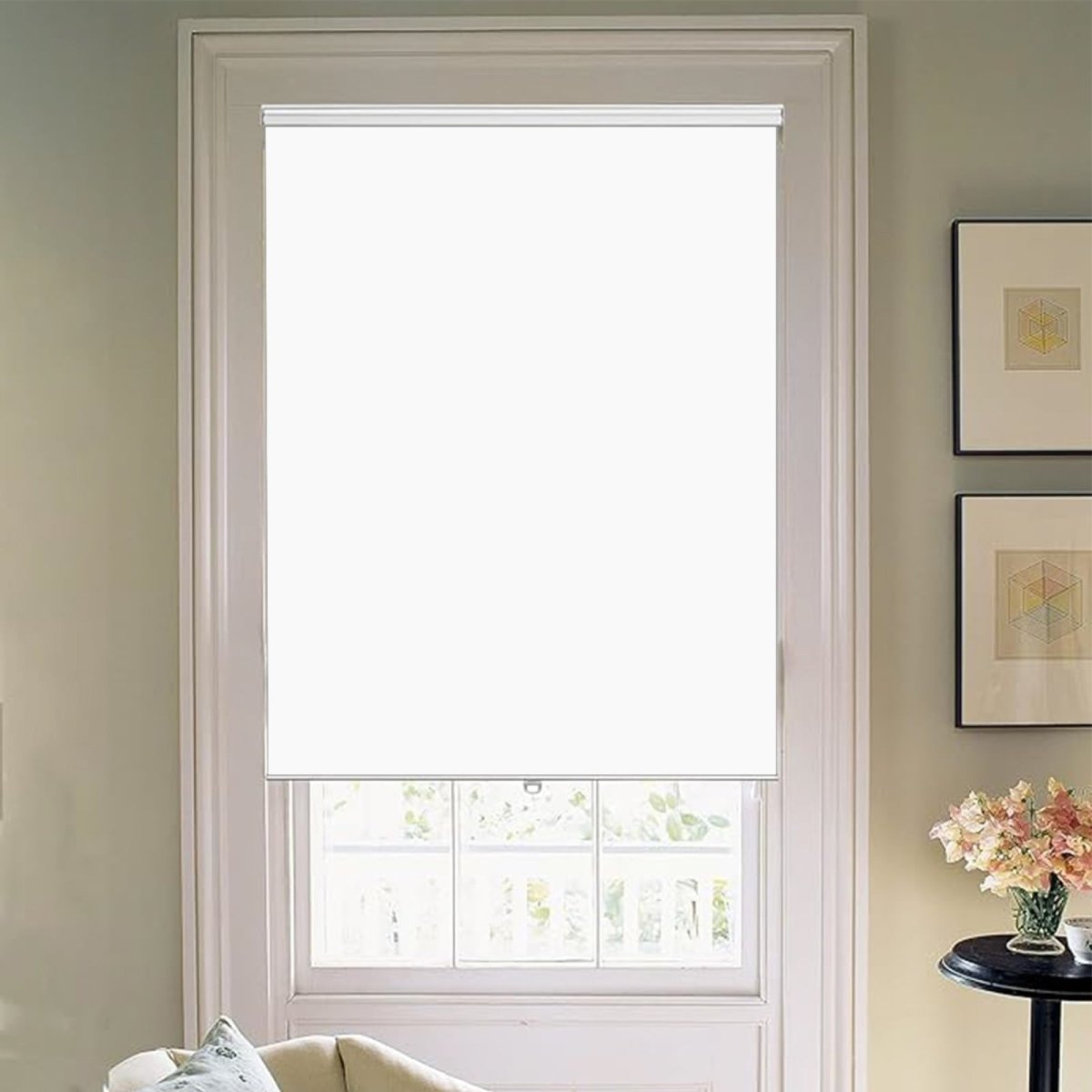Tired of fighting with your thermostat? It seems like we all have that one room in the house that is either an icebox during the winter months or a sauna in the summer. While this problem can stem from various sources, one of the most significant and often overlooked factors is the window itself.
In most homes, the primary causes of heat loss are found in the windows. However, there is a solution that is not only functional, but also fashionable: insulated cellular shades.
What Are Cellular (or Honeycomb) Shades?
"Cellular shades," also known as "honeycomb shades," are composed of a minimum of two layers of fabric that are laminated together to form "honeycomb" shaped "cells" or "pockets," as they are called. They get this name from this particular structure.
Cellular Shades vs. Pleated Shades
Many people are confused between a cellular shade and a pleated shade. A cellular shade is a distinct insulating system, whereas a pleated shade is simply a piece of folded fabric. They look exactly alike from the front.
| Feature | Pleated Shades | Cellular Shades |
| Structure | Single layer of fabric | Single or double-layered (Hollow fabric cells) |
| Insulation | Minimal (offers basic light filtering) | Excellent (the key advantage) |
| Lift Cords | Can be seen (passed through small, pricked holes) | Can't be seen (passed between layers) |
| Appearance | "Z"-shaped "accordion" fold | "Z" shaped fold from the front |

Science: Trapped Air is a Great Insulator
So, how does a simple shade stop a freezing draft or a baking-hot sunbeam? The design tackles the three ways heat moves, but it all starts with the "pockets."
The Pockets Stop Air Flow (Convection)
You know that drafty feeling you get near a window in winter? That's convection. Your warm room air hits the cold glass, gets cold, sinks to the floor, and pulls more warm air toward the window to replace it. It's a non-stop, heat-sucking cycle.
The honeycomb cells trap the air in tiny pockets, so it simply can't move. By stopping that air from circulating, you've shut down the main energy drain in the room.
The Structure Adds More Layers
A single-cell shade creates one great layer of trapped air, which provides outstanding insulation for the vast majority of homes and climates.
A double-cell shade, by contrast, adds a second layer.
Think of it like this: a single-cell shade is like a modern double-pane window—it is already the standard for high efficiency. A double-cell shade is a more specialized solution for even harsher environments.
In short, a single-cell shade is the perfect all-around choice, while a double-cell shade offers an extra buffer for the most extreme temperatures (both hot and cold).
The Material Stops Heat Rays (Radiation)
Stopping air flow is great, but what about the intense heat you can feel radiating from the sun? This is where the material choice becomes critical.
- Light-Filtering Fabrics: These are the standard and do a fantastic job creating the air-trapping pockets.
-
Blackout Fabrics (The "Secret Weapon"): These are the ultimate insulators because they have a foil lining hidden inside the cells. This foil acts like a tiny mirror.
- In Summer: It reflects the sun's harsh heat rays back outside before they can heat your room.
- In Winter: It reflects the heat from your furnace back into your room, keeping the warmth right where you want it.
To Sum It Up: A cellular shade is a complete insulating system. The pockets stop drafts, the cellular structure adds more barriers, and the foil-lined material reflects heat. This powerful combination is what creates that perfect, comfortable barrier between you and the window.

How Cellular Shades Function in the Winter
This air forms a strong barrier that prevents the flow of heat.
In the winter, this is a key element in keeping the heat in the house.
- It first catches the warm air that tries to move towards the window since the window is colder.
- Secondly, it prevents convective flow (draft) as well as slows heat conduction.
This combined result is effective in trapping more heat within your room. This is backed by the U.S. Department of Energy, who explains that if shades are installed effectively in a home, they can reduce the loss of heat around windows by as much as 40% or higher.
How Cellular Shades Function in Summer
Cellular shades also work in summer.
These shades apply the same concept of insulation to keep the summer sun out, but they offer resistance to a different element: solar gain. This is particularly important on a sunny day when a large amount of solar radiation pours through your window, heating the interior of a room.
The shade's material, a type of fabric, is a shield.
- It catches this powerful energy as it is striking the window.
- It directs a significant amount of sunlight back outside before it is absorbed, leading to unwanted heat.
This is a preventative measure that keeps the room cooler. According to the U.S. Department of Energy, the window shades prevent this unwanted heat gain of as much as 60% from occurring. This is in addition to preventing the UV rays that cause fading of furniture and floors.

What to Look For: Not All Shades Are Equal
To achieve optimal results, one needs to understand what he/she is looking for:
1. Cell Structure (Single vs. Double)
a. Single Cell: A single layer of honeycomb cells. Acts as a great insulator in homes. And it's the most popular choice.
b. Double Cell Curtains: Two layers of cells are combined. This provides an extra boost if you live in a place with extreme weather such as hot summers and cold winters.
2. Light Control (Light Filtering vs. Blackout)
- Light Filtering: This is a curtain comprised of a soft material that allows a warm shine to enter a room. This is ideal for use in living rooms as well as kitchen areas where sunlight is needed as well as insulation.
- Blackout: This is the most energy-efficient choice of window treatment. Blackout shades with a layer of aluminum foil in the cells will offer the best insulation qualities. This aluminum foil will act like a mirror in the cells of the shades, reflecting the heat away.
3. Pleat Size
This is primarily a matter of aesthetics. Smaller pleats will give the best results in small windows, whereas large pleats will be appropriate for full-length windows.

A Bonus Feature: They Reduce Noise in Your House!
It's not just the temperature that is beneficial. These air pockets are also great absorbers of sound.
Hard surfaces in your home, such as glass or wood blinds, reflect sound waves, causing an echo. Soft, air-filled cells in a honeycomb shade absorb the sound waves.
This assists in two ways:
- It blocks outside sounds: Traffic noise and barking dogs become less audible.
- It reduces inside noise: This eliminates any echo that is experienced inside the room, making a calm environment.
It has been found that cellular shades are able to absorb as much as 70% of sound waves, which to the human ear is equivalent to having the volume cut in half. What a great way to reduce noise in a bedroom, nursery, or home office!

Upgrade Your Home with Insulated Cellular Shades
Insulated cellular shades work hard for you all year long. They keep you warm in winter by stopping up to 40% of heat loss through your windows. In summer, they block up to 60% of unwanted heat from entering your home. Plus, they make your home quieter by absorbing up to 70% of outside noise. The key to getting these results is making sure your shades fit perfectly with no gaps around the edges. Ready to start saving energy and improving your comfort? Browse Joydeco's cellular shades collection and find the perfect fit for your home today.
5 FAQs About Cellular Shades
Q1: What is the primary difference between cellular shades and conventional blinds?
The most obvious point of comparison is that of their purpose. Conventional blinds will feature wood or vinyl slats that can be tilted in order to redirect the sunlight. By contrast, in the case of cellular shades, the purpose is insulating.
Q2: Are cellular shades difficult to clean?
No, they're very easy to keep clean. They can either be cleaned with a feather duster or a vacuum cleaner with a soft brush attachment. They can also be cleaned by blowing them with a can of compressed air or a hair dryer set to a cool setting.
Q3: Are cellular shades a good choice for a kid's room or a nursery?
They are a great option for three main reasons:
- Safety: Cordless options eliminate the problem of dangling cords, which is a source of danger to children and pets.
- Sound: They possess the ability to reduce external noises.
- Darkness: Blackout options provide 100% darkness that is ideal during daytime sleep.
Q4: What kind of shades—blackout or light-filtering—would I best use in a living room?
It will differ based on what exactly you require. Light filtering shades are in high demand as living room shades. They offer great insulation properties in addition to letting a large amount of natural soft light enter the room. However, if this is a media room as well as a living room, a blackout shade will be the best choice.
Q5: How important is a customized fit in the case of insulation?
Yes, this is crucial. This is how a whole barrier of trapped air is formed by the shades. If the sizes are not appropriate and there are some gaps between them on the sides, air will only find its way in around the edges of the blinds, thereby negating the insulating effects.

